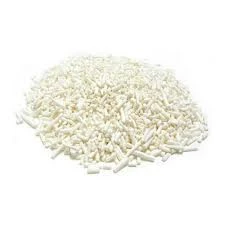
Exploring the Properties and Applications of Styrene Butadiene in Modern Industries
Styrene-Butadiene An Overview
Styrene-butadiene, commonly referred to as SBR (Styrene-Butadiene Rubber), is a synthetic rubber that has become an integral material in various industries. Known for its exceptional versatility, SBR is produced through the copolymerization of styrene and butadiene. The resulting material combines the desirable properties of both components, making it a favored choice in applications ranging from tires to industrial goods.
One of the key characteristics of styrene-butadiene rubber is its outstanding resistance to abrasion and aging. These traits are particularly important in the automotive industry, where tires must endure harsh conditions while maintaining durability. SBR's excellent tensile strength and flexibility also contribute to its popularity in tire manufacturing, wherein it is typically blended with natural rubber to enhance performance.
Styrene-Butadiene An Overview
The versatility of styrene-butadiene extends to its ability to be modified for specific needs. Different grades of SBR can be produced by adjusting the ratio of styrene to butadiene during the polymerization process, which allows manufacturers to tailor the rubber’s properties, such as hardness and resilience. This customization ability has opened new avenues for innovation, enabling the development of specialized products that meet the diverse demands of various sectors.
styrene butadiene

Environmental considerations have also prompted shifts in the production and application of styrene-butadiene. The rubber industry is increasingly focused on sustainability, with research being directed toward the development of bio-based alternatives to conventional SBR. These efforts aim to reduce the carbon footprint associated with synthetic rubber production, while still maintaining the performance characteristics that SBR is known for.
Moreover, the recycling of SBR has gained attention as a method to minimize waste and promote circular economy principles. Recycling processes allow for the recovery of SBR from end-of-life products, which can then be reprocessed into new rubber materials. This not only reduces landfill waste but also conserves the resources used in SBR production.
Despite the advancements in sustainability, challenges remain. The demand for styrene-butadiene rubber continues to grow, driven by the expanding automotive and manufacturing sectors. As industries evolve, so too must the benefits and sustainability practices surrounding SBR to ensure they align with global environmental goals.
In conclusion, styrene-butadiene rubber is a vital material in numerous applications, characterized by its durability, flexibility, and resistance to wear. As the industry continues to innovate and address sustainability concerns, SBR is poised to remain a key player in various fields, from automotive to industrial manufacturing. Its ability to adapt to changing market demands will shape the future landscape of synthetic rubber production.
-
Sodium Dichloroisocyanurate Safety Handling ProtocolsNewsJul.29,2025
-
Mining Chemicals for Copper Extraction Processes GuideNewsJul.29,2025
-
Fertilizer for Sale Shipping and Storage TipsNewsJul.29,2025
-
Dimethyl Disulfide as Sulfurizing AgentNewsJul.29,2025
-
Benzotriazole Safety Data Handling and Storage GuidelinesNewsJul.29,2025
-
Ammonium Bicarbonate Safety Handling Storage GuidelinesNewsJul.29,2025
-
The Transformative Role Of Trichloroisocyanuric Acid in Water TreatmentNewsJul.23,2025
Hebei Tenger Chemical Technology Co., Ltd. focuses on the chemical industry and is committed to the export service of chemical raw materials.
-

view more DiethanolisopropanolamineIn the ever-growing field of chemical solutions, diethanolisopropanolamine (DEIPA) stands out as a versatile and important compound. Due to its unique chemical structure and properties, DEIPA is of interest to various industries including construction, personal care, and agriculture. -

view more TriisopropanolamineTriisopropanolamine (TIPA) alkanol amine substance, is a kind of alcohol amine compound with amino and alcohol hydroxyl, and because of its molecules contains both amino and hydroxyl. -

view more Tetramethyl Thiuram DisulfideTetramethyl thiuram disulfide, also known as TMTD, is a white to light-yellow powder with a distinct sulfur-like odor. It is soluble in organic solvents such as benzene, acetone, and ethyl acetate, making it highly versatile for use in different formulations. TMTD is known for its excellent vulcanization acceleration properties, which makes it a key ingredient in the production of rubber products. Additionally, it acts as an effective fungicide and bactericide, making it valuable in agricultural applications. Its high purity and stability ensure consistent performance, making it a preferred choice for manufacturers across various industries.











